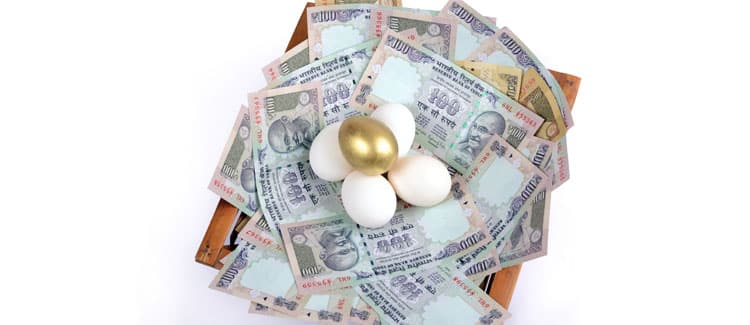UPI Transaction Income Tax India 2025
Unified Payments Interface (UPI) has revolutionised digital payments in India, making transactions quick, convenient, and widespread. As UPI usage surges, it is crucial to understand the income tax implications related to UPI transactions in 2025. This guide breaks down UPI transaction limits, taxability, interchange fees, new rules, and what individuals and businesses should know for compliance.
What is UPI?
Unified Payments Interface (UPI) is an instant real-time payment system launched by National Payments Corporation of India (NPCI) that allows users to link multiple bank accounts on a single mobile app and transfer money digitally without sharing bank details. UPI enables peer-to-peer (P2P) and peer-to-merchant (P2M) payments and has become the backbone of India's cashless economy.
UPI Transaction Limit Per Day in 2025
The standard daily UPI transaction limit for 2025, as set by the National Payments Corporation of India (NPCI), is ₹1 lakh. However, NPCI has recently issued a circular that increases these limits for certain categories, effective from 15 September 2025, allowing transactions up to ₹10 lakh per day. Below is a summary of these changes:
| Category | Existing Limit (Per Transaction) (Prior to 15/09/25) |
Increased Limit (Per Transaction) (Applicable from 15/09/25) |
| Credit Card Payments | ₹2 lakh | ₹5 lakh |
| Capital Markets (Investments) | ₹2 lakh | ₹5 lakh |
| Insurance | ₹2 lakh | ₹5 lakh |
| Government e-Market Place (EMD/ Tax Payments) | ₹1 lakh | ₹5 lakh |
| Travel | ₹1 lakh | ₹5 lakh |
| Jewellery | ₹1 lakh | ₹2 lakh |
| FX-Retail via BBPS (Bharat Bharat Bill Payment System) | ₹2 lakh | ₹5 lakh |
| Digital Account opening | ₹2 lakh | ₹5 lakh |
| Digital account opening - initial funding | ₹2 lakh | ₹2 lakh |
| Payments to educational institutions and hospitals | ₹5 lakh | ₹5 lakh |
| IPOs and RBI Retail Direct schemes payments | ₹5 lakh | ₹5 lakh |
Here are the UPI transaction limits per day for different banks:
| Bank Name | UPI Daily Limit |
| IndusInd Bank | ₹1,00,000 |
| Punjab National Bank (PNB) | ₹1,00,000 |
| Bank of Maharashtra | ₹1,00,000 |
| Kotak Mahindra Bank | ₹1,00,000 |
| Asia Bank | ₹1,00,000 |
| UCO Bank | ₹1,00,000 |
| State Bank of India (SBI) | ₹1,00,000 |
| Central Bank of India | ₹1,00,000 |
| Federal Bank | ₹1,00,000 |
| Canara Bank | ₹1,00,000 |
| DBS Bank | ₹1,00,000 |
| Bandhan Bank | ₹1,00,000 |
| Indian Bank | ₹1,00,000 |
| Axis Bank | ₹1,00,000 |
| Yes Bank | ₹1,00,000 |
| Bank of India | ₹1,00,000 |
| Bank of Baroda | ₹1,00,000 |
| HDFC Bank | ₹1,00,000 |
| Union Bank of India | ₹1,00,000 |
| Standard Chartered Bank | ₹1,00,000 |
| ICICI Bank | ₹1,00,000 |
| South Indian Bank | ₹1,00,000 |
| HSBC Bank | ₹1,00,000 |
UPI Transaction Limit Per Week and Month
In addition to daily limits, some banks set a weekly UPI transaction limit, which varies from bank to bank within the UPI network. This weekly cap is designed to help manage overall payment volumes and reduce the risk of fraud or misuse.
Similarly, a monthly UPI transaction limit has been introduced by certain public sector and private sector banks. This monthly cap also differs across banks, aiming to provide an additional layer of control while facilitating convenient digital payments for individuals and businesses.
UPI Transaction Charges
UPI transactions for personal payments remain free of any extra charges. Individuals making payments via UPI do not incur transaction fees, making it an attractive payment method.
However, for transactions involving digital wallets (Prepaid Payment Instruments or PPIs), payments exceeding ₹2,000 attract charges. The charge, called an interchange fee, is paid by merchants, not customers.
Surcharge/Interchange Fee on UPI Payments via PPI
When UPI payments are made through PPIs such as wallets (e.g., PhonePe, Paytm), interchange fees are applied to cover processing, authorization, and other transaction-related costs. This fee is similar in nature to the merchant discount rate applicable to credit card payments.
The interchange fee rate ranges between 0.5% and 1.1%, depending on the merchant category:
- Fuel payments: 0.5%
- Utilities, telecom, education, agriculture, post office: 0.7%
- Supermarkets: 0.9%
- Insurance, mutual funds, railways, government services: 1%
Who Pays the Interchange Fees?
The merchant's bank or wallet provider pays the interchange fee to the payer's bank for processing the transaction. Small retailers are typically unaffected, as these fees apply only to larger merchant wallet transactions above ₹2,000.
Medium and large merchants may either absorb this cost or pass it on to customers indirectly through pricing. Additionally, wallet issuers like PhonePe and Paytm are required by NPCI to pay a 0.15% service charge to banks when a wallet is loaded with more than ₹2,000.
Do Customers Pay Interchange Fees?
Customers do not pay interchange fees for UPI payments made via wallets for Peer to Peer (P2P) or Peer to Merchant (P2M) transactions. The fees are settled between banks and service providers behind the scenes.
What is a Prepaid Payment Instrument (PPI) in UPI?
PPIs refer to digital wallets and payment instruments that allow users to preload money and make payments online in real-time. Examples include wallets like PhonePe, Paytm, Amazon Pay, Freecharge, and others, as well as prepaid cards and vouchers.
Payments made using PPIs typically involve scanning a UPI QR code and completing the transaction without directly using bank accounts.
Updated UPI Operational Guidelines (Effective August 1, 2025)
To improve payment system efficiency and security, the NPCI implemented new rules across all UPI apps, including Google Pay, PhonePe, Paytm, and BHIM:
- Balance Check Limit: Users can check their bank balance up to 50 times per day per UPI app. Exceeding this limit blocks further balance checks for 24 hours.
- Auto-Balance Display: After every successful UPI transaction, the remaining account balance is automatically displayed.
- Account Linking Limit: Up to 25 bank accounts can be linked per day per UPI app using the same mobile number or account fetching method.
- Transaction Status Checks: Pending transaction status can be checked up to 3 times per transaction, with a mandatory 90-second gap between attempts.
- Auto-Debit Processing Time: Mandates for auto-debit payments such as EMIs, SIPs, and subscriptions will only be processed during non-peak hours (before 10:00 a.m. and after 9:30 p.m.).
- Payee Name Display: UPI apps must display the payee's registered bank name before completing any transfer, enhancing transparency and reducing fraud.
FAQs
-
What is the daily UPI transaction limit in 2025?
The standard daily limit is ₹1 lakh for personal transactions, with higher limits up to ₹10 lakh for specific categories like insurance, capital markets, and education. -
How much UPI transaction value is tax-free?
Individual payments up to ₹50,000 via UPI are generally exempt from tax as gifts. Amounts exceeding this must be reported and may be taxed. -
What happens if I exceed the UPI transaction limit?
Users are generally limited to 20 transactions per day. Banks may restrict or temporarily block additional transactions until the next day.
˜The insurers/plans mentioned are arranged in order of highest to lowest first year premium (sum of individual single premium and individual non-single premium) offered by Policybazaar’s insurer partners offering life insurance investment plans on our platform, as per ‘first year premium of life insurers as at 31.03.2025 report’ published by IRDAI. Policybazaar does not endorse, rate or recommend any particular insurer or insurance product offered by any insurer. For complete list of insurers in India refer to the IRDAI website www.irdai.gov.in
*All savings are provided by the insurer as per the IRDAI approved insurance plan.
^The tax benefits under Section 80C allow a deduction of up to ₹1.5 lakhs from the taxable income per year and 10(10D) tax benefits are for investments made up to ₹2.5 Lakhs/ year for policies bought after 1 Feb 2021. Tax benefits and savings are subject to changes in tax laws.
¶Long-term capital gains (LTCG) tax (12.5%) is exempted on annual premiums up to 2.5 lacs.
++Source - Google Review Rating available on:- http://bit.ly/3J20bXZ


- SIP Calculator
- Income Tax Calculator
- Compound Interest Calculator
- NPS Calculator
- Show More Calculator
Income Tax articles
Explore the popular searches and stay informed
- LIC
- Investment Plan
- Annuity Plan
- Child Plan
- Pension Plan
- ULIP Plan
- Child Investment Plan
- SIP
- SIP Calculator
- SBI SIP
- ULIP Calculator
- Sukanya Samriddhi Yojana
- Best SIP Plans
- Retirement Planning
- SBI SIP Calculator
- HDFC SIP Calculator
- Sukanya Samriddhi Yojana Interest Rate
- NPS Interest Rate
- Deferred Annuity Plans
- SBI Annuity Deposit Scheme Calculator
- Immediate Annuity Plans
- Post Office Child Plan
- Prime Minister Schemes For Boy Child
- Government Schemes for Girl Child
- 50k Pension Per Month
- Atal Pension Yojana Calculator
- Best Pension Plan in India
- CIBIL Score
- 1 Crore Term Insurance
- Best Term Insurance Plan
- Term Insurance for Women
- Term Insurance for NRI
- Term Insurance
- Term Insurance Calculator
- Life Insurance
- Term Insurance with Return of Premium
- Whole Life Insurance
- Term Insurance vs Life Insurance
- What is Term Insurance
- Life Insurance Calculator
- 5 Crore Term Insurance
- 2 Crore Term Insurance
- 50 Lakh Term Insurance
- Term Insurance for Housewife
- Benefits of Term Insurance
- Term Insurance Terminology
- Medical Tests for Term Insurance
- Term Insurance for Self Employed
- Claim Settlement Ratio
- 10 Crore Term Insurance
- Term Insurance for Smokers
- 1.5 Crore Term Insurance
- Zero Cost Term Insurance
- FIRE Calculator












